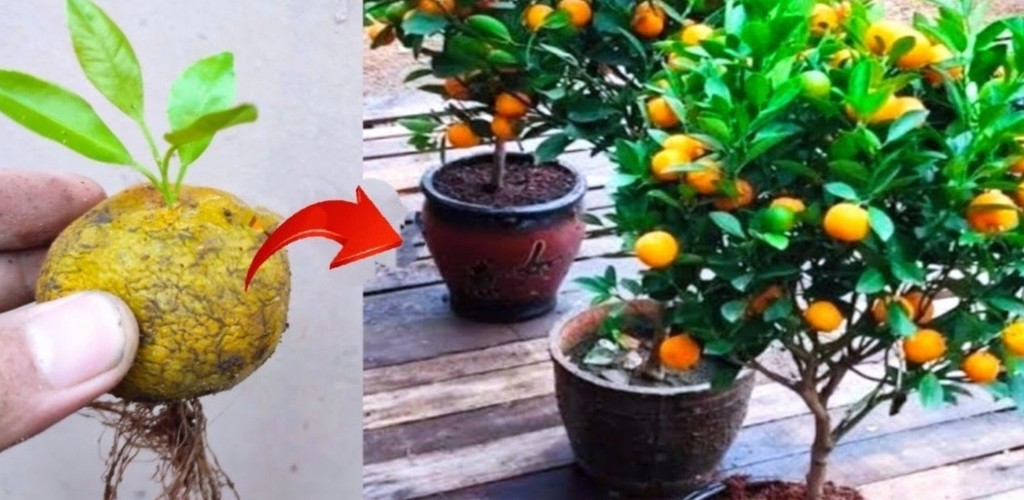Here’s how to get infinite tangerines from a single fruit
The mandarin should not be confused with the clementine. The latter is a mandarin hybrid. That is, it comes from the fertilization of a mandarin flower by the pollen of a sweet orange. There is also a difference in taste. Tangerines are sweeter than clementines and contain more seeds. This fruit is also the least acidic compared to the rest of the citrus fruits.
How to plant tangerines in a pot?
To plant tangerines at home, just follow these 3 steps.
Read also: 6 mistakes you should not make when planting cucumbers
- Step 1: Prepare the germination of mandarin seeds
First select the seeds of an organic tangerine and wash them. Then place the seeds on a damp cotton pad to germinate, and place the cotton in a glass.
- Step 2: Prepare the pot to plant the mandarin seeds
Choose a pot with drainage holes and place stones in the bottom. Add a layer of sand on top to ensure better airflow. For potting soil, use a mix of peat, perlite, and fertilizer. You can also enrich the soil with humus. Then water the soil without wetting it.
- Step 3: Plant the tangerine seeds
When the seeds begin to sprout, gently plant them in the soil and cover them with some soil. Then cover the surface of the pot with a transparent plastic film, to maintain heat and humidity, and to accelerate the germination of the seeds, in order to consequently obtain young shoots. Keep your pot in a warm, lighted room, but avoid direct sunlight. Water as soon as the soil dries out, but don’t overdo it. When the first sprouts appear, remove the transparent film and place your pot at a temperature of about 20°C, with exposure to partial shade.
How to maintain the tangerine tree and get good tangerines?
The tangerine tree is easy to maintain. Water your fruit tree regularly, making sure the soil remains moist between waterings. The mandarin tree needs a regular supply of water, like all citrus fruits. Also, if you notice that the leaves are pointing towards the ground, it means that your tree is lacking water. Fertilize your tree throughout its vegetative growth period, that is, from March to September. Choose a slowly decomposing fertilizer for this , and add it to a moist substrate, so that the minerals do not burn the roots of your tree.
When the young plants reach a height of 10 to 15 cm and their root system is well developed, transplant them into a larger pot. A transplant is also necessary every 2 or 3 years. Place clay pebbles in the bottom of the new pot to ensure good drainage and use a substrate composed of sand, compost and garden soil.
Next, prune your tree as soon as the flowers appear. To do this, cut off thin branches and twigs to avoid crowding your bush. This way, your mandarin tree’s fruits will have more access to light.
Also protect your fruit tree from diseases and pests that plague it. An example is mealybugs, which suck tree sap and produce a sticky juice called honeydew. The latter attracts ants and fungi responsible for sooty mold, which is a cryptogamic disease. Other pests may attack your tree, such as aphids or whiteflies.
Read also: Why you should plant tea bags? This is the trick of experienced gardeners, your neighbors will want to know your secret
Also, if you want to transplant your bush into the ground, wait until it is at least 30 cm tall. This will ensure that your mandarin tree is robust enough for outdoor cultivation, especially since this fruit tree fears the cold. In fact, if you have potted mandarin trees grown outdoors, it is recommended to keep them in a sheltered spot in the garden. In winter, you can place the wintering veil under the edge of the pot.
Thanks to a few seeds, you can grow tangerines at home, to perfume your home and harvest unlimited organic tangerines!
Read also: If you have this plant, you’re in luck: why is it so essential at home?
